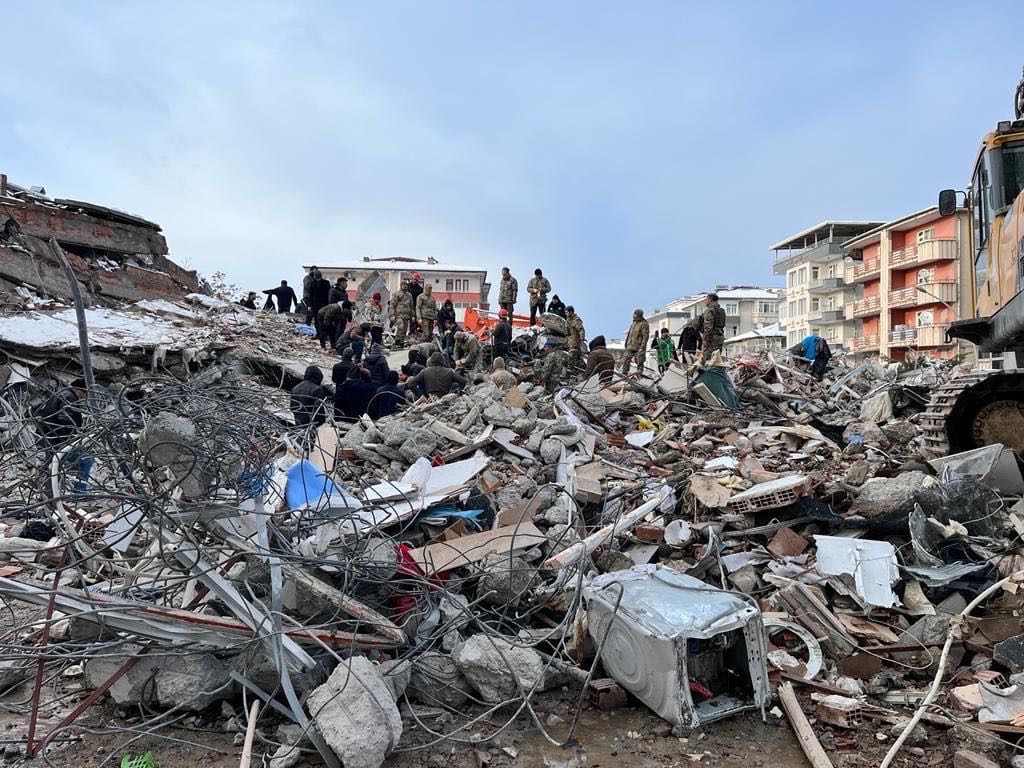

On Feb. 6, 2023, a magnitude 7.8 earthquake occurred in southern Turkey near the northern border of Syria. This quake was followed approximately nine hours later by a magnitude 7.5 earthquake located around 59 miles (95 kilometers) to the southwest.
The first earthquake was the most devastating to hit earthquake-prone Turkey since 1999 and was as strong as one in 1939, the most powerful recorded there. It was centered near Gaziantep in south central Turkey, which is home to thousands of Syrian refugees and the many humanitarian aid organizations also based there.
Key facts
- The country of Turkey is recognized in English as Türkiye by the United Nations (UN).
- Syria’s current complex humanitarian emergency is among the largest humanitarian crises in the world, and the earthquake only exacerbated the situation and vulnerabilities.
- Between February 2023 and February 2024, Candid tracked 465 grants totaling $289 million and 55 pledges worth $206 million in response to the earthquakes in Turkey and Syria.
- The earthquakes and underlying vulnerabilities resulted in the deaths of at least 56,000 people in Turkey and Syria. Local actors reported that authorities stopped counting, and this figure is most likely much higher. Aid workers were among those killed.
- The humanitarian community estimated that 8.8 million people lived in areas most affected by the earthquake in Syria.
- At least 230,000 buildings were damaged or destroyed across 11 provinces in Turkey, and at least 10,600 buildings were completely or partially destroyed in northwest Syria. In Aleppo alone, around 3,500 buildings were damaged and need structural repair and 700 buildings were classified as unsafe.
- UNDP said the earthquakes generated at least 10 times as much rubble in Turkey as the last big Turkish earthquake in 1999. Both affected countries face the daunting task of disposing of hundreds of millions of tonnes of rubble, some of it potentially harmful.
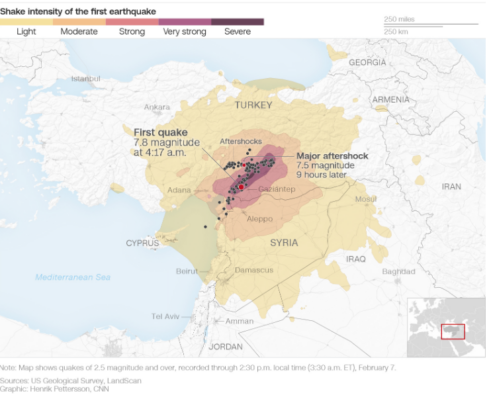
(Photo: Members of the Turkish Armed Forces conduct search and rescue efforts after the earthquake, Feb. 7, 2023. (Source: Republic of Türkiye Ministry of National Defence via Twitter)
Latest Updates
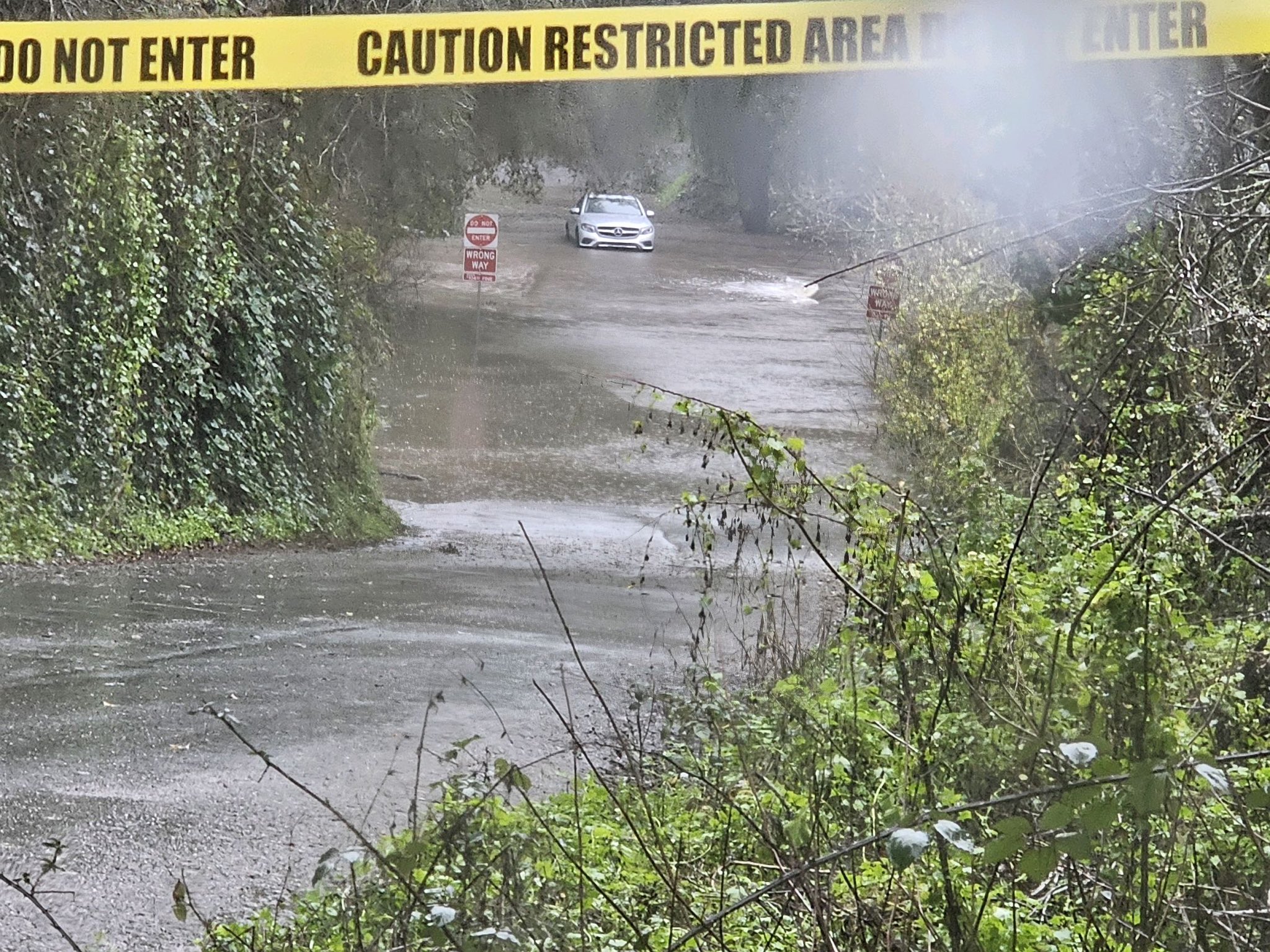
What we’re watching: Weekly disaster update, February 5
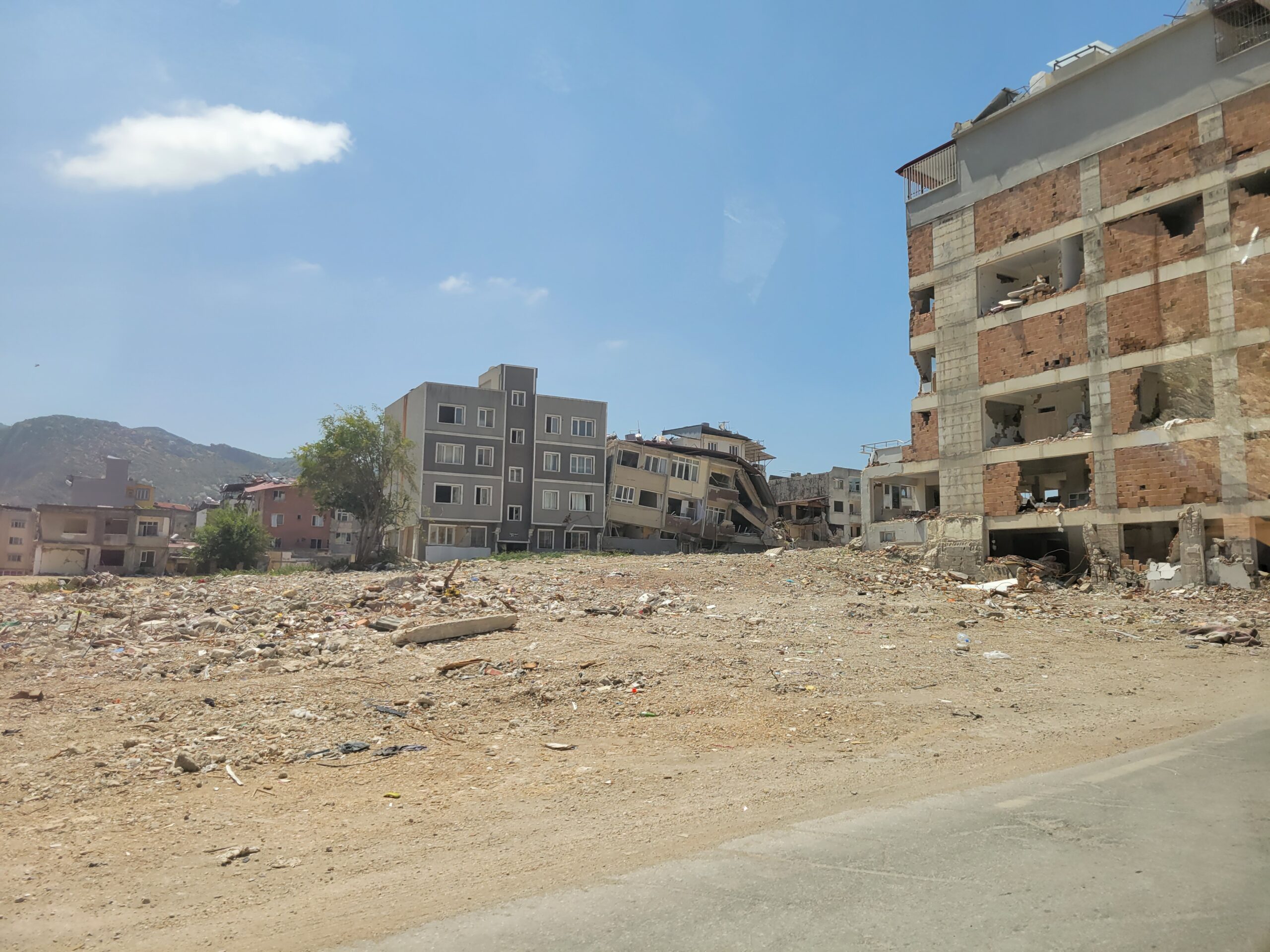
Announcing grants to support Turkey-Syria earthquake recovery
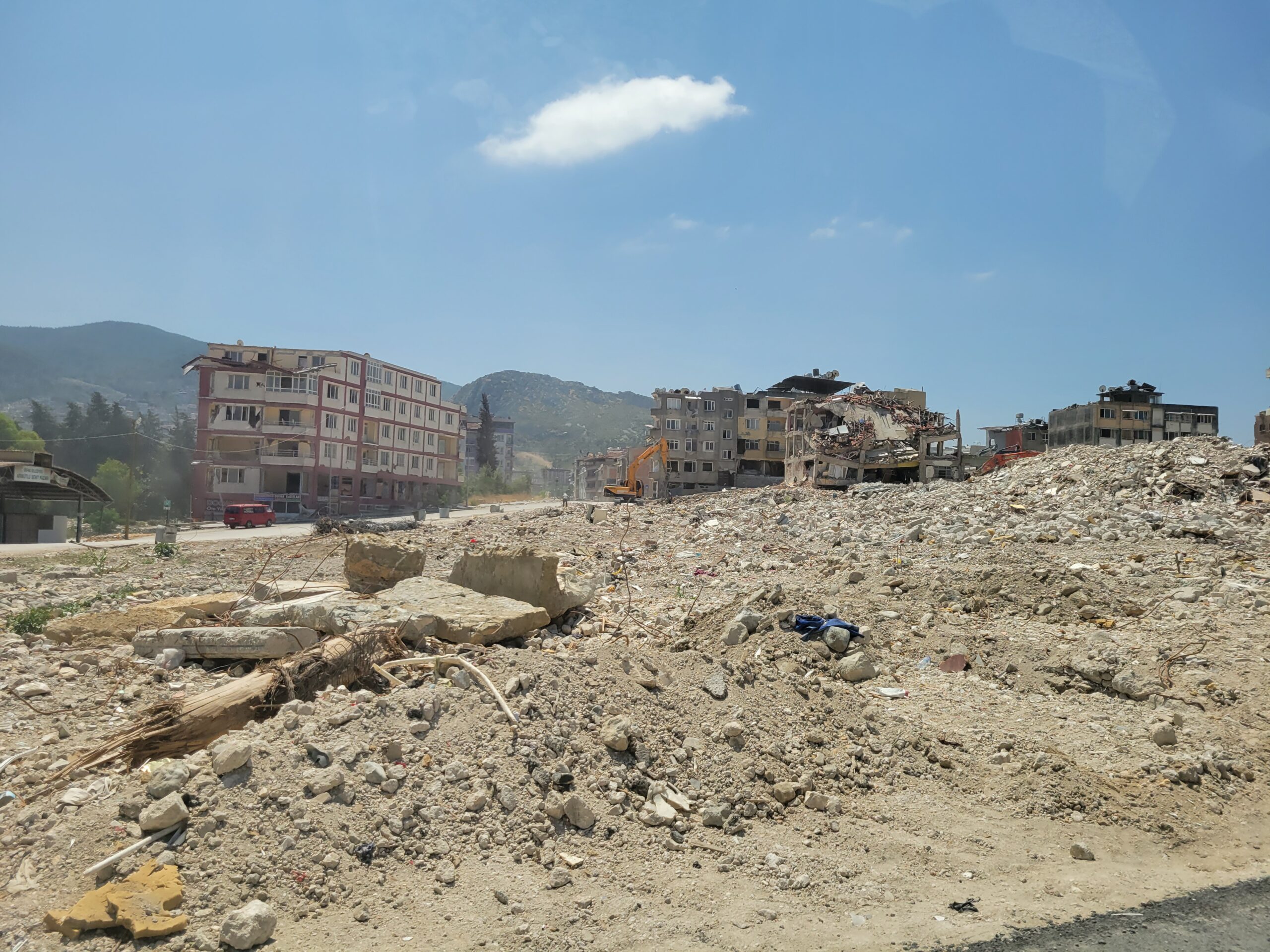
How do you recover from a massive earthquake? What’s next in Turkey and Syria?
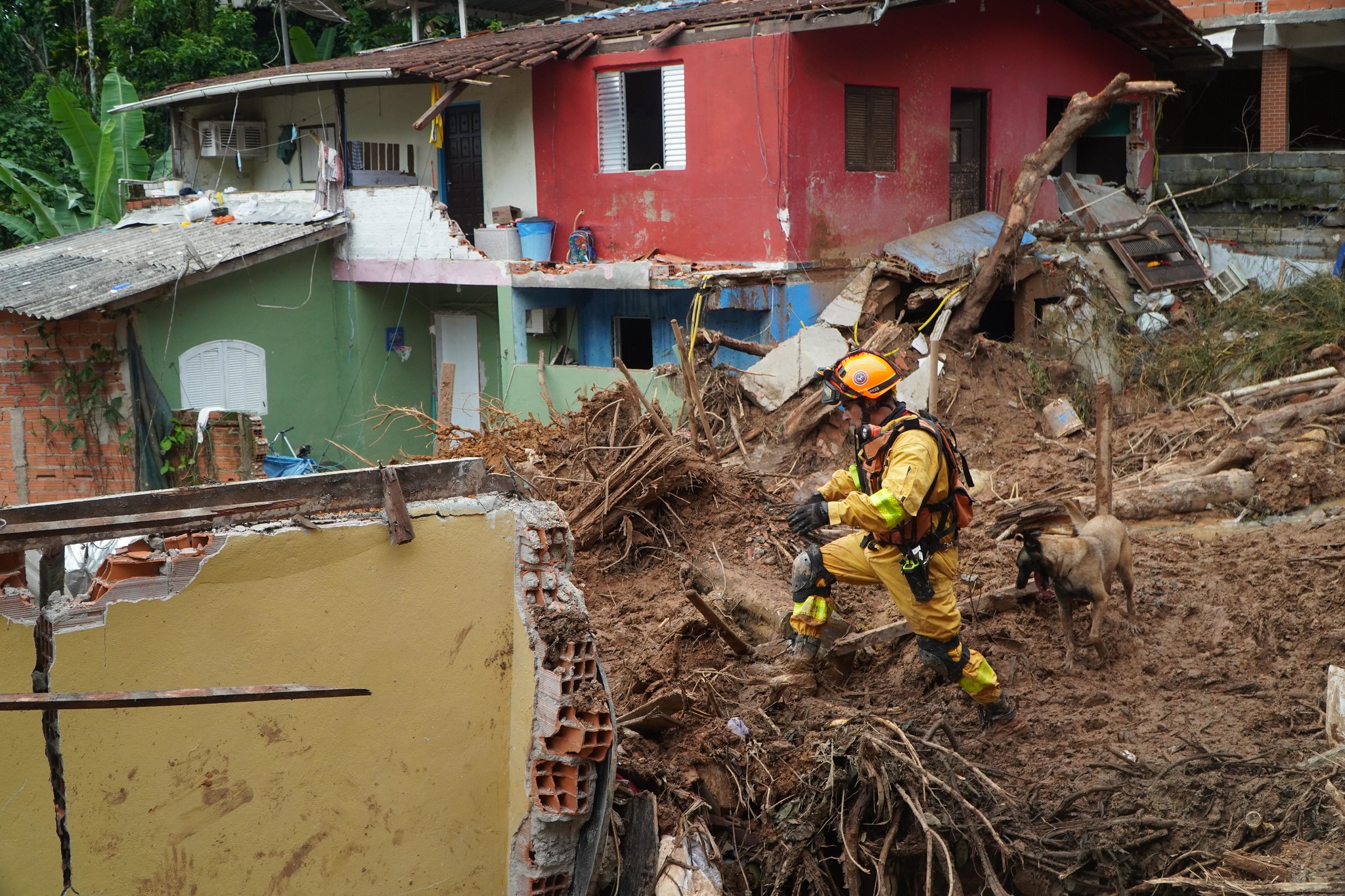
What we’re watching: Weekly disaster update, February 27
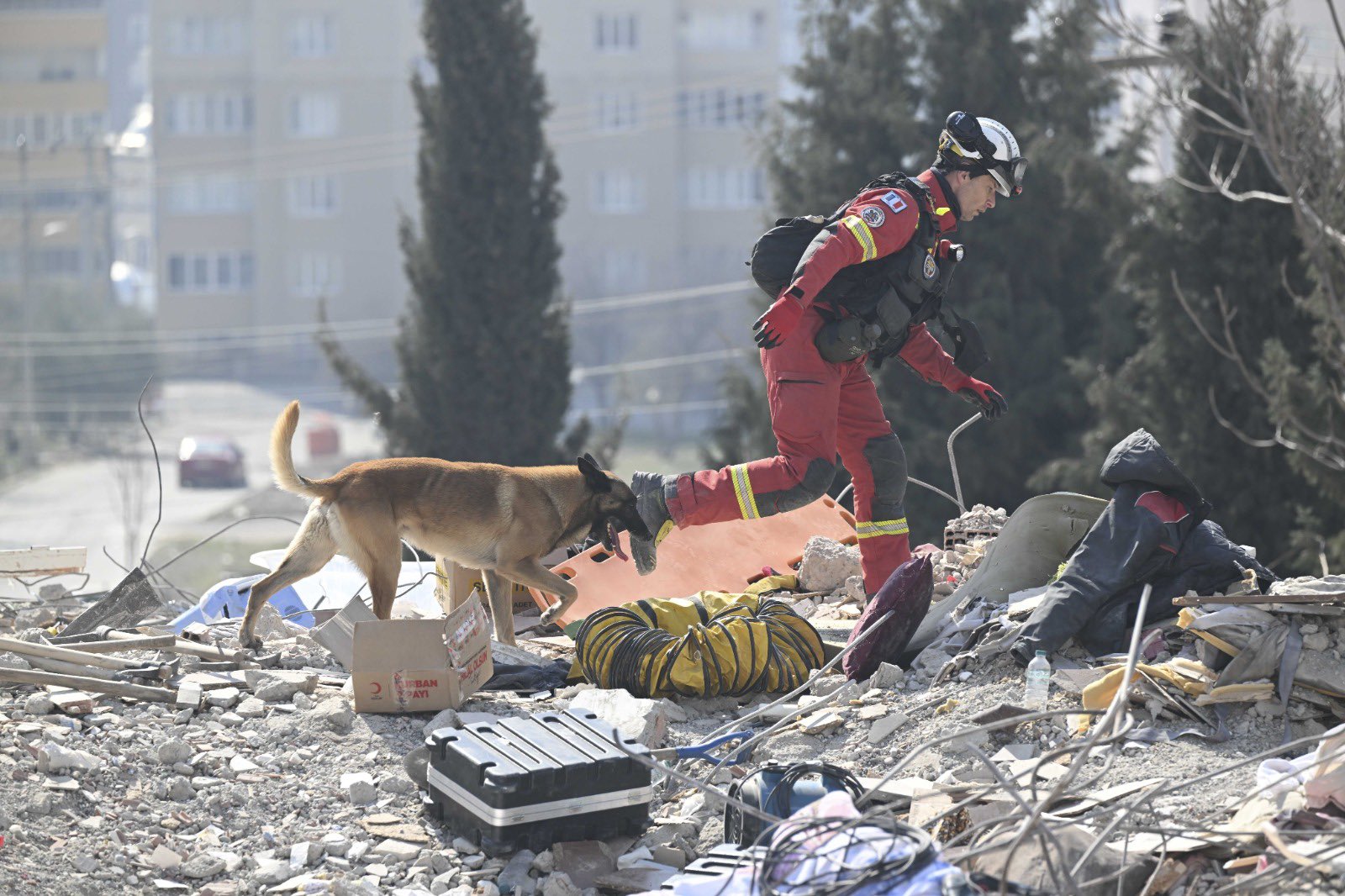
The Patterson Foundation Contributes $375,000 to CDP’s Turkey & Syria Earthquake Recovery Fund
Existing humanitarian crisis worsened
In 2024, at least 16.7 million people were expected to need humanitarian assistance, with about 25% of those in northwest Syria, the area of the country hardest hit by the earthquake.
According to UNOCHA, “In 2022, 85 per cent of households [in Syria] were unable to meet their basic needs, with a disproportionate impact on populations with vulnerabilities compounded by age, gender, and/or disability. In a country where only 59 per cent of hospitals, 57 per cent of primary health care facilities and 63 per cent of specialized centres were fully functional before the earthquake, this earthquake will result in a further collapse of basic services, and significantly delay any scope for recovery.”
The 2024 Humanitarian Needs Overview for Syria said, “The socioeconomic situation has continued to deteriorate, further exacerbated by the February earthquakes, negatively impacting social cohesion, and amplifying vulnerabilities.”
The Syrian complex humanitarian emergency is characterized by nearly 13 years of ongoing hostilities and their long-term effects, including large-scale internal and cross-border displacement, widespread destruction of civilian infrastructure, and significant violations of international humanitarian law.
In late 2024, fighting intensified in northwest Syria, and rebel forces captured both Aleppo, Syria’s largest city, and the capital, Damascus. This offensive led to the fall of the dictator, Bashar al-Assad, whose family had ruled Syria for more than 50 years.
The recent fighting is believed to have added an additional one million internally displaced people in northwest Syria to the 3.5 million people who were already displaced.
Food insecurity
According to Syria’s 2024 Humanitarian Needs Overview, at least 12.9 million people across Syria needed food assistance in 2024. .
In Turkey, the United Nations Food and Agriculture Organization (FAO) said that the earthquakes caused $6.7 billion in losses and damage to crops, livestock production, food stocks, agricultural infrastructure and assets.
FAO also said that the earthquake severely impacted 11 key agricultural Turkish provinces affecting more than 15 million people and more than 20% of the country’s food production.
Ongoing disaster risk
According to ACAPS, new earthquakes are among the worst-case scenarios for the region because they could impact humanitarian needs and the ability to meet them.
On Feb. 20, 2023, a 6.4 magnitude earthquake killed three people and injured 213 in southern Turkey. On Feb. 27, 2023, a magnitude 5.6 earthquake shook southern Turkey, causing damaged buildings to collapse and killing at least one person.
Earthquakes are among the most devastating natural hazards. Turkey’s two main fault zones make the region one of the most seismically active in the world. Natural hazards only become disasters when they interact with a human society or community, referred to as vulnerability in disaster studies.
In this disaster, vulnerability looks like poorly constructed buildings that do not meet modern earthquake building standards, thousands of Syrian refugees in Turkey or displaced people in northwest Syria that live in informal settlements, destruction of infrastructure within Syria after years of war and aerial bombings, an ongoing complex humanitarian emergency in Syria due to conflict, and a cholera outbreak.
Shelter
At least 10,600 buildings were completely or partially destroyed in northwest Syria. In Aleppo alone, around 3,500 buildings are damaged and need structural repair and 700 buildings were classified as unsafe.
According to the World Bank’s Global Rapid Post-Disaster Damage Estimation Report, direct damages in Turkey from the earthquakes were estimated at $34.2 billion. The total direct damages are mostly damages to residential buildings ($18 billion or 53% of total). The report said that based on global experience, “recovery and reconstruction costs will be much larger, potentially twice as large” as the $34.2 billion figure.
The GRADE Report for Syria estimated $5.1 billion in direct physical damages. The World Bank says, “Direct damages to residential buildings account for nearly half of total damages (48.5% of the median value or US$2.5 billion), while damages in non-residential buildings (e.g., health facilities, schools, government buildings, and private sector buildings) account for one third of the total impact (33.5% or US $9.7 billion).”
Cash assistance
As with most disasters and emergencies, cash donations are recommended by disaster experts as they allow for on-the-ground agencies to direct funds to the most significant area of need, support economic recovery and ensure donation management does not detract from disaster recovery needs and quickly re-establishing access to basic needs.
The Center for Disaster Philanthropy recommends cash both as a donation method and a recovery strategy. Direct cash assistance can allow families to purchase items and services that address their multiple needs. It gives each family flexibility and choice, ensuring that support is relevant and timely. Cash-based approaches to disaster recovery also give people the freedom to choose how they rebuild their lives and provide a pathway to economic empowerment.
Livelihood and food security
In the Syria earthquake Flash Appeal launched by the UN and humanitarian partners, one of the three strategic objectives was to “support livelihoods and basic services in areas affected by the earthquake.”
In addition to cash assistance, strengthening livelihoods is important, considering Syrian households have gradually lost their purchasing power while food prices have almost doubled since before the earthquake.
Mental health and psychosocial support
The earthquake affected internally displaced people and created new displacements, which changed people’s way of life, perhaps including loss of livelihood, extreme poverty and damaged social support structure. Because of the ongoing conflict, displaced Syrians also may have had post-traumatic stress disorder.
The number of people with mental health conditions was expected to increase post-earthquake while also limiting access for many people in need to the already scarcely available mental health services in Syria. According to UNOCHA, in northwest Syria, 994,500 persons have a mental disorder, and 229,500 have severe mental disorders. However, only 24 psychologists were available in the area.
Survivors of the deadly earthquakes are forced to deal with lasting trauma. In northwest Syria, psychological first aid, case management and safe service points were overwhelmed with rising needs.
Protection and support for marginalized populations
After a disaster, protecting marginalized individuals and ensuring access to their basic rights are immediate priorities.
According to UNOCHA, “Gender inequality exacerbates the impact of disasters, and the impacts of disasters exacerbate gender inequality and vulnerability. Of particular concern are vulnerable women, children, older persons and persons with disabilities who are disproportionally affected.”
Due to the layout and population density of some settlement sites, women and girls face increased protection risk of exploitation and abuse. In many of such sites, a lack of sex-segregated toilets, overcrowding, and an absence of privacy in water, sanitation and hygiene facilities and tent areas, led to an increase in sexual violence risks, particularly against women and adolescent girls.
CARE, a humanitarian organization, released a Rapid Gender Analysis (RGA) Brief for the earthquake. The RGA “explores existing gender, age and disability data and information to understand pre-existing vulnerabilities and capacities and how best humanitarians can respond to meet people’s different needs.” Recommendations to humanitarian actors, international non-government organizations and AFAD include:
- Collaborate with relevant local and national actors, including women-led organizations and women’s rights organizations who are often leading GBV prevention and response efforts. Assess sexual exploitation, abuse and harassment risk factors and integrate these into program planning and ensure all stakeholders have been informed about services and referral pathways.
A report published by HelpAge International and Action for Humanity in February 2024 revealed that exclusion from the workforce leaves older people marginalized and older people with disabilities struggle to earn respect or recognition. Older people emphasized the need to prioritize initiatives that promote their self-reliance.
Organizations led by and serving LGBTQIA+ people in Turkey and northwest Syria face operational challenges and most operate and provide assistance through formal and informal networks. LGBTQIA+ people in these contexts face discrimination and are often unable or unwilling to seek assistance or are actively excluded from receiving assistance.
There was a significant increase in racism against refugees in Turkey, affecting their ability to access and receive assistance and also negatively impacting tasks such as obtaining bank accounts and credit, dealing with suppliers, and children facing racism and verbal and physical violence in schools.
Shelter
The significant damage to community infrastructure, such as schools, hospitals, religious facilities, and housing in Turkey and Syria, will require immediate and long-term assistance.
The Turkey Earthquakes Recovery and Reconstruction Assessment outlined a set of key principles “to ensure that the recovery from the earthquake is resilient, inclusive, green and sustainable.”
In February 2024, IFRC and the Shelter Cluster released a lessons learned report from the earthquake response. It is projected that many of the earthquake-affected population will continue to live in temporary shelters for the next three to four years, until they have more permanent options available. The report’s recommendations include improving the livability in temporary shelters, focusing on light repairs of low-damaged buildings, improving the participation of local organizations and ensuring protection concerns are addressed.
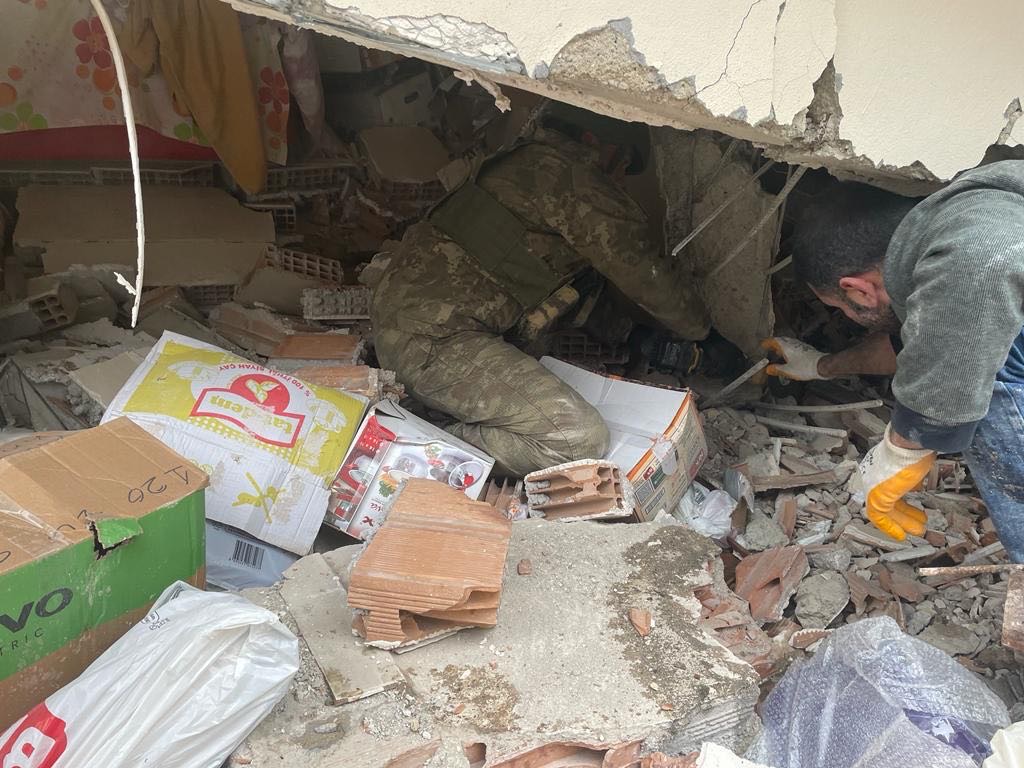
CDP has a Turkey & Syria Earthquake Recovery Fund that supports earthquake-affected families and communities as they work to rebuild and recover.
Contact CDP
Philanthropic contributions
If you have questions about donating to the CDP Turkey & Syria Earthquake Recovery Fund, need help with your disaster-giving strategy or want to share how you’re responding to this disaster, please contact development.
(Photo: The Turkish Army supports search and rescue efforts in Turkey after the earthquake, Feb. 6, 2023. Source: Republic of Türkiye Ministry of National Defence; via Twitter)
Recovery updates
If you are a responding NGO, please send updates on how you are working on recovery from this disaster to tanya.gulliver-garcia@disasterphilanthropy.org.
We welcome the republication of our content. Please credit the Center for Disaster Philanthropy.
Philanthropic and government support
On Feb. 16, 2023, CDP hosted a webinar, “A layered disaster: Supporting long-term recovery in Turkey and Syria.” Speakers shared the latest information, including critical needs and gaps, and provided concrete takeaways for funders to effectively support relief and recovery efforts now underway.
Resources
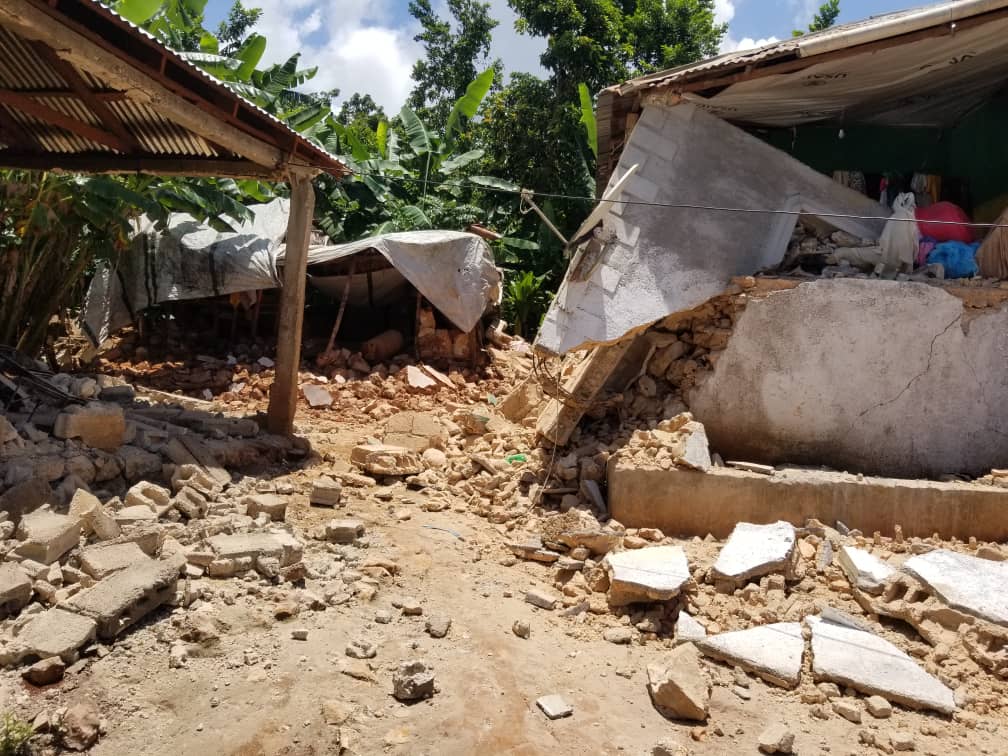
Earthquakes
Striking without warning, earthquakes often are among the most devastating disasters. Caused by the movement of plates along fault lines on the earth’s surface, earthquakes often leave a monumental path of instant death and destruction.
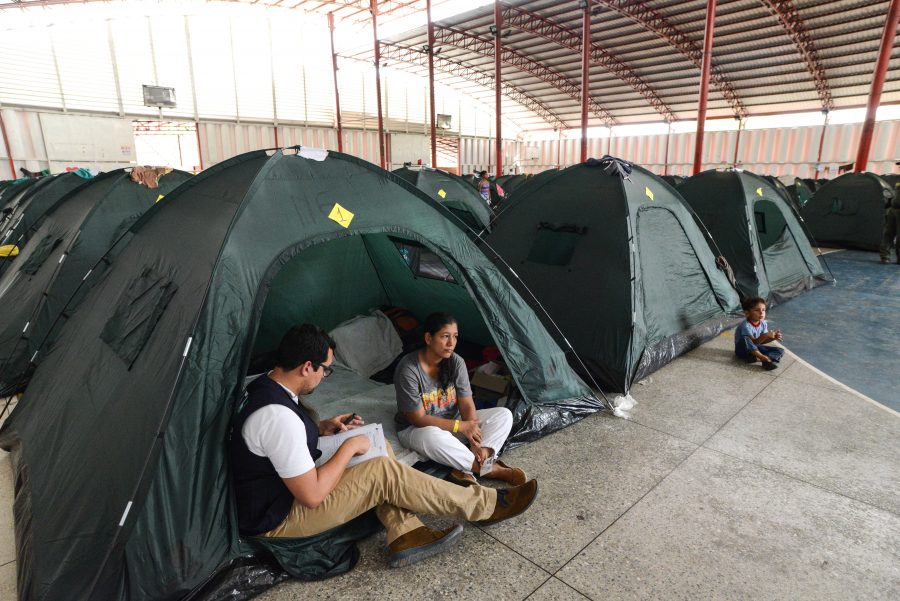
Complex Humanitarian Emergencies
CHEs involve an acute emergency layered over ongoing instability. Multiple scenarios can cause CHEs, like the civil wars in Syria and Yemen, the man-made political crisis in Venezuela, or the conflict in Ukraine.

Disaster Phases
Disasters affect millions of people and cause billions of dollars in damage globally each year. To help understand and manage disasters, practitioners, academics and government agencies frame disasters in phases.